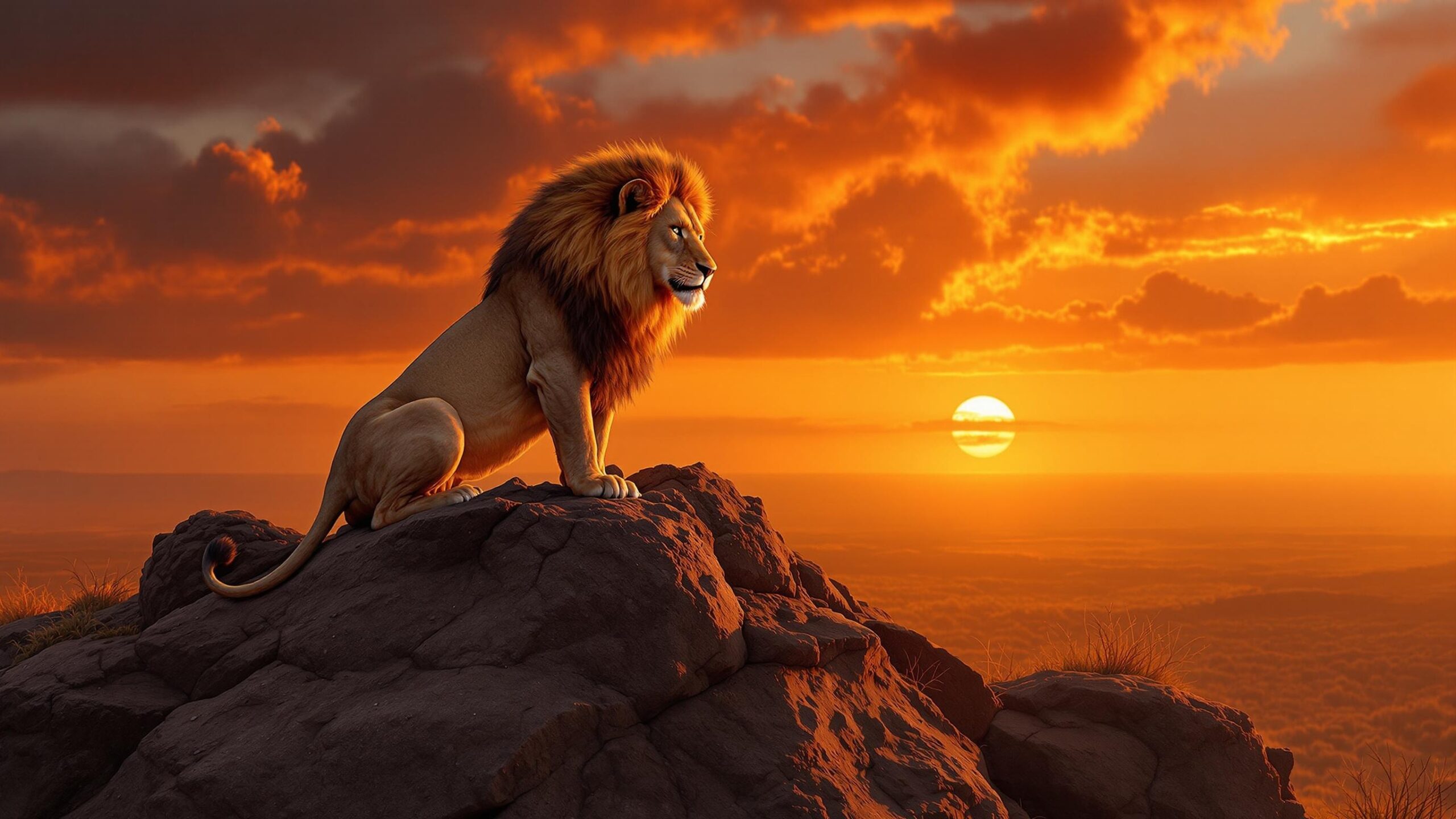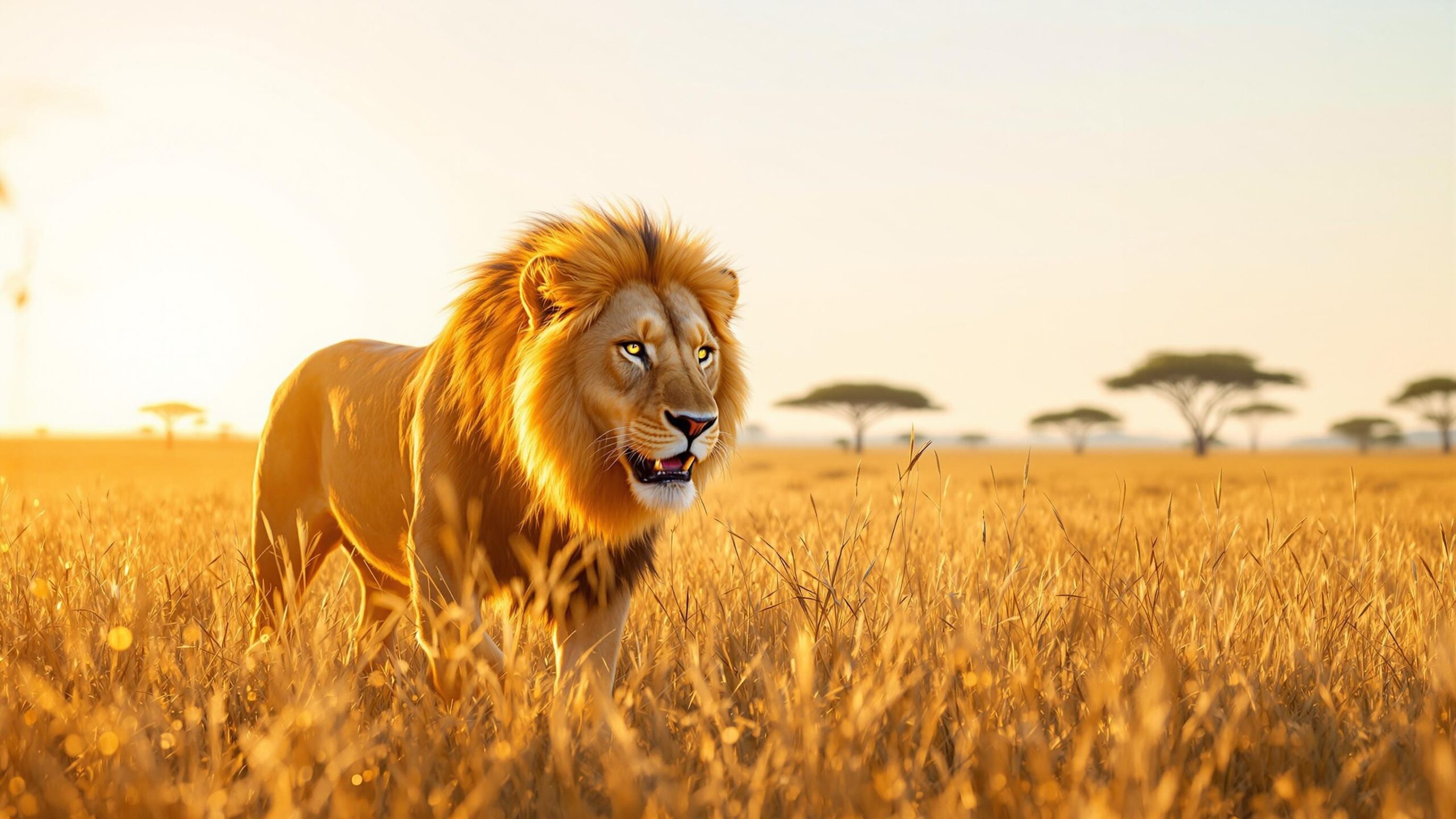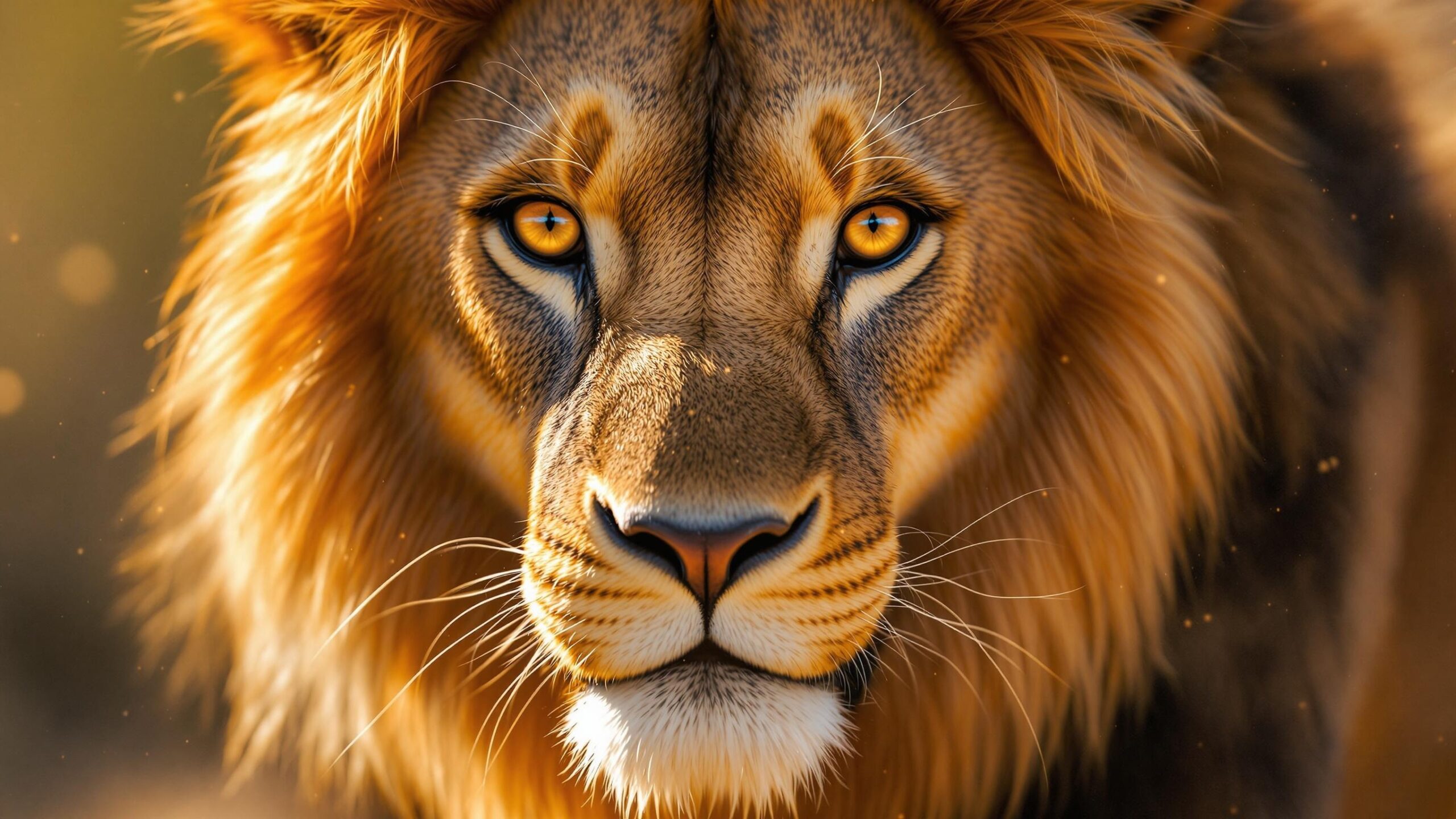African Lion: The Iconic King of the Wild
Powerful, majestic, and endlessly captivating, the African lion (Panthera leo leo) stands as one of the most recognizable animals on Earth. Revered across cultures and celebrated in everything from folklore to film, this great cat has earned its title as “King of the Jungle”—even though it lives primarily in grasslands, not jungles. With a commanding roar that echoes across the savanna and a muscular presence built for dominance, the African lion symbolizes both wild beauty and raw strength. But beyond the grandeur lies a fascinating and complex creature—one shaped by social bonds, survival instincts, and a legacy that stretches back millions of years.
Physical Characteristics: Power in Every Step
African lions are built like no other feline. Males typically weigh between 330 and 550 pounds, while females are smaller, averaging between 260 and 400 pounds. Both sexes possess lean, muscular bodies, but it’s the male’s mane that most dramatically distinguishes them. This thick, shaggy collar of hair, which varies in color from blond to black, signals maturity and strength. In many cases, darker manes are associated with higher testosterone levels and stronger genetic fitness.
Lions have strong limbs, massive paws, and retractable claws—perfect tools for seizing and subduing large prey. Their teeth, particularly the canines, are long and sharp, designed to crush windpipes or clamp down on the necks of wildebeests, zebras, and buffalo. Despite their size, lions are surprisingly agile and can reach speeds of up to 50 miles per hour in short bursts. This combination of power, stealth, and speed makes them one of Africa’s top predators. Their fur is typically a golden tawny color, offering camouflage in the dry grasslands where they roam. Cubs are born with faint spots on their coats, a trait carried from evolutionary ancestors, which usually fades as they mature.
Habitat and Range: From Grasslands to Woodlands
Once roaming across vast swaths of Africa, the Middle East, and southern Europe, lions today are largely confined to regions south of the Sahara. African lions are most commonly found in savannas, grasslands, and open woodlands where prey is plentiful and water is accessible. Some populations have adapted to harsher environments, including the Kalahari Desert and the Gir Forest of India, though the latter is home to the Asiatic lion, a different subspecies. Within Africa, major populations are concentrated in protected reserves and parks, such as Tanzania’s Serengeti National Park, South Africa’s Kruger National Park, and Botswana’s Okavango Delta. These areas provide relatively safe environments for prides to thrive, though not without their own challenges.
Lions typically prefer areas with open visibility, which allows them to spot and stalk prey effectively. Proximity to water is also crucial, especially in drier months. The ideal habitat for a lion is one where shade, cover, prey, and water intersect—and where competition from humans and other predators is kept to a minimum.

Social Structure: The Strength of the Pride
Unlike most other big cats, African lions are highly social creatures. They live in groups called prides, which are typically made up of five to fifteen members but can occasionally grow larger. A pride is usually composed of related females, their cubs, and a coalition of one to four males who act as the pride’s defenders and breeders. Females form the core of the pride and are often lifelong members. They hunt together, raise cubs communally, and protect each other. The males, on the other hand, tend to have a more transient role. They usually remain with a pride for two to four years before being challenged and replaced by rival males. During their tenure, dominant males will mate with multiple females and fiercely protect their territory from outside threats.
This dynamic social system is essential to lion survival. Working together allows them to take down larger prey and safeguard young cubs from danger. Cubs are raised by the group, and lionesses will even nurse each other’s offspring. This collective effort ensures the next generation has a better chance at survival in a landscape full of competition.
Hunting and Diet: Nature’s Tactical Predators
African lions are carnivores, and their diet reflects the abundance and variety of prey on the savanna. They often hunt antelope, wildebeest, zebra, buffalo, and giraffes, though they’ll also scavenge kills made by other predators or eat smaller animals like hares and birds if larger prey is unavailable. Lions are opportunistic feeders, meaning they take what they can get when they can get it. Hunting is typically carried out by the females of the pride, who work together using stealth, communication, and teamwork to bring down prey. While lions are not endurance runners, they rely on explosive speed and carefully coordinated attacks to close the distance quickly. One lion might approach the herd from one direction while others wait in ambush, ready to pounce when the prey flees.
Males may participate in hunts, especially when targeting larger prey like buffalo or when the pride needs to defend a kill from hyenas. After a successful hunt, the dominant males usually eat first, followed by the lionesses and then the cubs. Though lions hunt primarily at night or in the early morning and evening, they can also be active during the day, especially in cooler weather. In times of scarcity, lions may become more aggressive and bold, even raiding camps or livestock enclosures, which can bring them into conflict with humans.
Reproduction and Cubs: New Life in the Pride
Lions don’t have a specific breeding season and can mate year-round. When a lioness is in estrus, she may mate multiple times per day with one or more males from the pride. The gestation period is approximately 110 days, after which the lioness will give birth to a litter of one to four cubs, typically in a secluded den away from the rest of the pride. For the first few weeks, the lioness keeps her cubs hidden and nurses them in private. During this time, the cubs are especially vulnerable to predators and infanticide from rival males. Once the cubs are strong enough, usually around six to eight weeks old, the mother introduces them to the pride.
Within the pride, cubs are raised communally, and lionesses may synchronize births so they can co-nurse and protect each other’s young. Cubs begin eating meat at about three months of age but will continue nursing for up to six months. They play often, mimicking hunting and fighting behaviors that will be critical later in life.
Young males typically leave the pride between the ages of two and four, forming small coalitions with siblings or other males. Females may stay and become part of the hunting and caretaking structure. The average lifespan of a lion in the wild is 10 to 14 years, although males often live shorter lives due to the dangers of defending territory and confronting rivals.

Communication and Behavior: More Than a Roar
Lions are incredibly vocal and communicative animals. Their signature roar can be heard up to five miles away and serves as a warning to intruders or a call to pride members. Lions also use grunts, growls, moans, and purrs to communicate different moods and intentions. Each vocalization has meaning, whether it’s signaling affection, establishing dominance, or coordinating a group effort. Beyond sound, lions rely heavily on body language and scent. Rubbing heads and grooming each other are common behaviors that reinforce social bonds. Lions will also scent-mark their territory using urine or by rubbing their faces and bodies on trees and rocks, leaving behind chemical signals that identify ownership and reproductive status. While lions spend much of their time in action-packed hunts or dramatic pride battles, they are also known for their rest. Lions may sleep or lounge for up to 20 hours a day, conserving energy between bursts of intense activity. This balance of social interaction and rest is a hallmark of their behavior, allowing them to thrive in a highly competitive environment.
The Role of Lions in Their Ecosystem
Lions play a critical role in maintaining the health and balance of their ecosystems. As apex predators, they help regulate herbivore populations, which in turn affects vegetation patterns, water distribution, and biodiversity. By targeting the sick, old, or young, lions naturally cull prey populations and prevent overgrazing, which helps preserve the health of grasslands and other habitats. Lions also influence the behavior of other animals. Their presence can alter prey movement, shape predator hierarchies, and even impact scavenger species like vultures and hyenas. In many ways, lions serve as a keystone species—a species whose presence has a disproportionately large impact on its environment.
Their ecological significance extends to humans as well. Lions attract tourism revenue, support conservation economies, and play an educational role in connecting people to wildlife and wilderness. They are a living link between human cultures and the natural world.
Threats and Human Impact: A Changing Landscape
While the African lion still roams across much of the continent, its range and population have diminished significantly in recent decades. The most pressing threats lions face today include habitat loss, human-wildlife conflict, poaching, and a decline in natural prey species. As human populations grow and expand into lion territory, the animals increasingly find themselves in fragmented habitats. Roads, farms, and settlements often cut across traditional migration routes and hunting grounds. When lions prey on livestock, farmers may retaliate, sometimes lethally, to protect their livelihood. While protected reserves and parks offer some safety, not all lion populations benefit equally. Some live in isolated patches where genetic diversity suffers, and others are exposed to unregulated hunting or illegal wildlife trade. Although lion bone and body part trade is less widespread than that of other big cats, it still poses a risk in certain regions. Conservation groups are working to support coexistence strategies, such as building lion-proof bomas (livestock enclosures), offering compensation for lost animals, and involving local communities in tourism and wildlife management. While challenges remain, these efforts are helping shift the narrative from conflict to coexistence.
Lions in Culture and Media: A Timeless Symbol
The African lion’s influence stretches far beyond the savanna. Throughout history, lions have been depicted in ancient carvings, royal crests, religious texts, and folklore. In many African cultures, lions symbolize courage, leadership, and guardianship. Ancient Egyptians associated them with war deities, while medieval European kingdoms used lions as emblems of strength and sovereignty. In modern times, lions have become pop culture staples. From literature and movies to sports mascots and national emblems, their image commands attention and admiration. The lion’s role in films like The Lion King or documentaries like Big Cat Diary has brought its story to global audiences, inspiring interest and advocacy among millions.
This dual identity—both wild predator and cultural icon—makes the lion a unique bridge between human society and the natural world. It’s a role few animals share and one that further elevates the lion’s significance in conservation and storytelling.
Conclusion: The Future of the African Lion
The African lion remains one of nature’s greatest achievements: a powerful, intelligent, and socially complex predator that defines the landscapes it inhabits. Its story is one of strength and struggle, of balance and resilience. While its numbers have declined and challenges persist, lions still rule much of the African wild, and efforts to ensure their future continue to grow. For the African lion to thrive, a shared understanding must exist between humans and wildlife. Through education, responsible tourism, community engagement, and habitat protection, there’s hope that future generations will hear the roar of lions echoing across open plains, just as they have for millennia.

